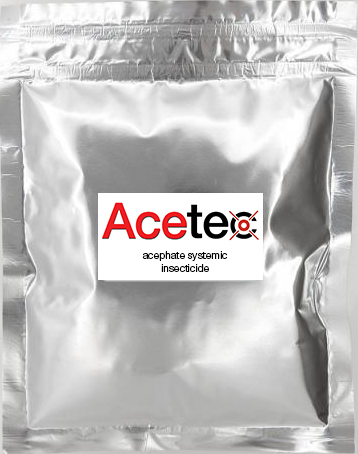Acetec is a specially formulated pesticide for use to protect trees and shrubs from infestation by leaf-chewing insects. This product is brought to you by arbortools and is available for purchase in Hong Kong. Contact us for more details.
Acetec (acephate 75%) 1kg Bag – Pesticide for Trees and Shrubs
Please Submit Quote Request
Description
Pesticide Mode of Action
The pesticide is an organophosphate. Organophosphates bind to and inhibit the enzyme acetylcholinesterase (AChE) in nervous system tissues. As a result, the neurotransmitter acetylcholine accumulates and repeatedly activates cholinergic receptors. Acephate itself is a weak acetylcholinesterase inhibitor. Methamidophos is a more potent organophosphate than acephate. Insects metabolize acephate into methamidophos by hydrolysis, whereas mammals metabolize acephate more readily into des- O-methylacephate, accounting for acephate’s relatively high selectivity against insects.
Methamidophos inhibits acetylcholinesterase through phosphorylation. Acetylcholine is the prominent insect stimulatory neurotransmitter for motor, sensory, and intermediate neurons, and is broken down by acetylcholinesterase. Organophosphates cause acetylcholine levels to increase and over-excite target nerves, muscles or tissues.
Method of Application
Soil injection by specialized equipment allows for application of the pesticide in a controlled manner. In addition, it is necessary to apply in this way to help ensure it reaches the tree roots directly and can be absorbed quickly by the tree.
*In the case of trees that do not have available soil for soil injection, it is also possible to apply trunk injection of the same pesticide. This is a different procedure of application but the same duration of effectiveness can be achieved.
IMPORTANT: It is not recommended to spray on the foliage or on the tree trunk or roots and it is not recommended to drench the soil. These methods are not effective and they also increase potential of pesticide exposure for non-target organisms such as beneficial insects, birds, humans, and other mammals.
What happens to This Pesticide in the environment?
Organophosphate pesticides degrade rapidly by hydrolysis on exposure to sunlight, air, and soil. Small amounts can change into methamidophos in soil, plants, and insects. Both chemicals are very mobile, moving with water easily. However, they break down relatively quickly. The half-life of acephate ranged from 4.5 to 32 days in soil. It does not tend to off-gas from soil or water. Plants absorb it quickly from the soil into their roots or through their leaves, and move it to other parts of the plant. The chemical is consumed by soil-borne microorganisms and is broken down into the soil.

